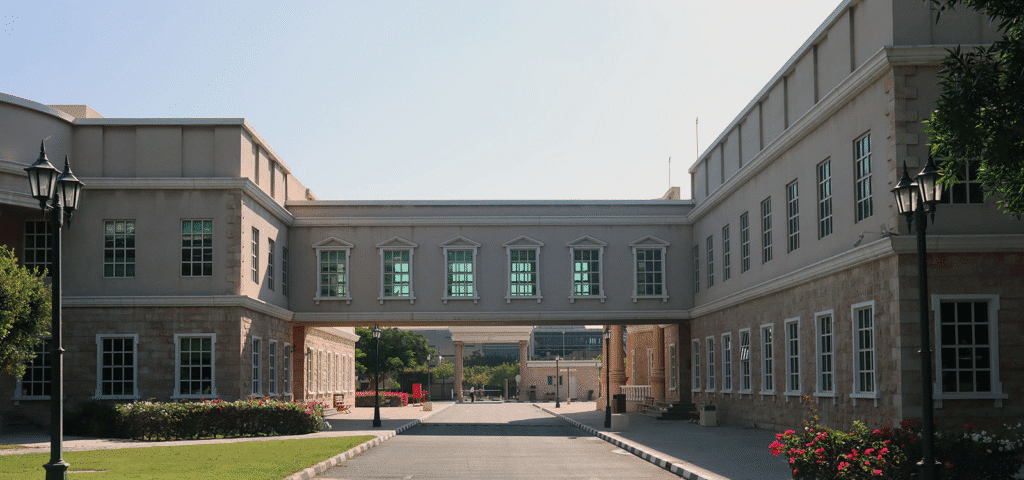The UAE medical school has officially opened, marking a major step forward in improving the country’s healthcare system. The new institution aims to provide high-quality medical education, address the shortage of healthcare professionals, and raise overall health standards. However, while the school’s opening is an important milestone, the hard work of establishing a strong, sustainable medical education system starts now.
Vision Behind the New Medical School
The new medical school is a collaboration between the American University in Dubai (AUD) and the University of Pennsylvania’s Perelman School of Medicine. This partnership combines international expertise with a focus on addressing the UAE’s healthcare needs. The school offers a Doctor of Medicine (MD) program, designed to produce physicians capable of delivering excellent healthcare both locally and globally.
The initiative is part of the UAE’s larger strategy to become a global healthcare leader. By creating a hub for medical education, research, and innovation, the country aims to attract top medical talent and foster advancements in medical science. The medical school is not just an educational institution; it is also intended to be a center for research, preparing students to contribute to medical knowledge and technological innovation.

Addressing the Healthcare Workforce Shortage
One of the key reasons for establishing the new medical school is the growing shortage of qualified doctors and healthcare workers in the UAE. As the population expands and chronic diseases become more prevalent, the demand for skilled medical professionals has increased significantly. Training more doctors locally will reduce the country’s dependence on foreign healthcare staff and help create a sustainable, self-reliant healthcare system.

The UAE medical school aims to produce graduates who are not only skilled in clinical care but also equipped to meet the evolving needs of the healthcare system. By increasing the number of locally trained physicians, the school will contribute to better patient care, improved health outcomes, and overall national health development.

Enhancing Medical Education and Research
The collaboration between AUD and Penn Medicine brings decades of experience in medical education to the UAE. The MD program will include a curriculum that combines rigorous clinical training with modern teaching methods. Students will have access to state-of-the-art facilities and immersive learning experiences, preparing them to handle real-world healthcare challenges effectively.
In addition to education, the medical school aims to foster a research-driven culture. Students and faculty will engage in research projects and innovative medical practices. This focus on research will help develop new treatments and technologies, contributing to the advancement of medicine both in the UAE and internationally.
The school also emphasizes practical experience. Partnerships with hospitals and clinics will allow students to participate in hands-on clinical training, ensuring they gain the necessary skills to become competent healthcare professionals.
Challenges Ahead
Funding and Infrastructure
Setting up a medical school is a major investment. The UAE medical school requires funding for faculty recruitment, infrastructure, and research facilities. Long-term sustainability depends on securing adequate financial support. Collaboration between the government and private sector will be crucial to ensure the school’s resources meet international standards.
Residency Program Availability
Another significant challenge is the availability of residency programs for graduates. Currently, residency opportunities in the UAE are limited. Without sufficient residency positions, new doctors may face difficulties completing their training. Expanding residency programs is essential to accommodate the growing number of medical graduates and ensure they receive comprehensive clinical training.
Integration Into the Healthcare System
Integrating the new medical school into the existing healthcare system requires careful planning. The curriculum must align with national healthcare priorities, and partnerships with hospitals and clinics are necessary for hands-on training. Continuous collaboration between the school, healthcare providers, and policymakers will be key to adapting to new technologies, medical practices, and evolving patient needs.
The Path Forward
While the UAE medical school represents a major achievement, it is only the beginning. Addressing challenges such as funding, residency programs, and healthcare integration will require joint efforts from the government, educational institutions, and healthcare providers.
By tackling these issues, the UAE can build a strong medical education system that produces skilled professionals ready to meet the country’s healthcare needs. Success in this initiative will not only improve healthcare quality in the UAE but also establish the country as a regional leader in medical education and innovation.
Benefits for Students and the Healthcare System
The establishment of the UAE medical school offers multiple benefits. Students gain access to world-class education, modern facilities, and global-standard training programs. Graduates will be prepared to work in hospitals, research institutions, and healthcare organizations both within the UAE and abroad.
For the healthcare system, the school will help create a pipeline of competent doctors, reducing dependency on expatriate medical staff. Over time, this will strengthen the national healthcare system, improve patient care, and contribute to public health initiatives.

The school also encourages innovation. By combining education and research, students and faculty can explore new treatments and medical technologies, positioning the UAE as a hub for medical advancements in the region.
Conclusion
The UAE medical school represents a critical step forward in improving health standards in the country. By offering high-quality medical education, expanding the healthcare workforce, and promoting research and innovation, the school has the potential to transform the UAE’s healthcare landscape.
However, challenges such as funding, residency opportunities, and healthcare integration must be addressed for the initiative to succeed. With sustained effort, collaboration, and investment, the UAE medical school can become a model institution, producing highly skilled doctors and setting new standards for healthcare in the region.
The journey to better health standards has begun, and the hard work starts now. The UAE is setting the stage for a healthier future, one doctor and one innovation at a time.
Do follow UAE Stories on Instagram
Read Next – UAE Minister Reem Al Hashimy Honored by Bill Gates as Champion for Child Survival















